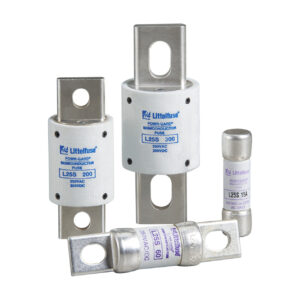 Choosing the correct fuse for your application can be overwhelming and time-consuming – even for a seasoned electronics design engineer. Our thanks to Littelfuse who created a user-friendly guide in making the fuse selection process quick and easy as well as optimizing the reliability and performance. National Fuse is a licensed distributor of Littelfuse fuses and products. Below is a summary of the main factors you should consider in selecting the correct fuse. To view the entire guide, click here.
Choosing the correct fuse for your application can be overwhelming and time-consuming – even for a seasoned electronics design engineer. Our thanks to Littelfuse who created a user-friendly guide in making the fuse selection process quick and easy as well as optimizing the reliability and performance. National Fuse is a licensed distributor of Littelfuse fuses and products. Below is a summary of the main factors you should consider in selecting the correct fuse. To view the entire guide, click here.
1. Normal Operating Current – The current rating of a fuse is typically derated 25% for operation at 25 ºC to avoid nuisance opening. For example, a fuse with a current rating of 10 A is not usually recommended for operation at more than 7.5 A in a 25 ºC ambient.
2. Application Voltage – The voltage rating of the fuse must be equal to or greater than the available circuit voltage.
3. Ambient Temperature – The current-carrying capacity tests of fuses are performed at 25 ºC and will be affected by changes in ambient temperature. Ambient temperature is the air temperature of any object or environment where equipment is stored. The higher the ambient temperature, the hotter the fuse will operate and the shorter its life. Conversely, operating at a lower temperature will prolong fuse life.
4. Overload Current Condition – Determine the current level for which protection is required. Fault conditions may be specified, either in terms of current or in terms of both current and maximum time the fault can be tolerated before damage occurs.
5. Maximum Fault Current – The interrupting rating of a fuse must meet or exceed the maximum fault current of the circuit.
6. Pulses – The general term “pulses” used in this context is to describe the broad category of wave shapes referred to as surge currents, start-up currents, inrush currents, and transients. Electrical pulse conditions can vary considerably from one application to another. Different fuse constructions may not react the same to a given pulse condition.
7. Physical Size Limitations – Refer to the product dimensions presented in current Littelfuse product datasheets for specific information.
8. Agency Approvals – For background information about common standards, consult the Standards and Certifications section of this guide.
9. Fuse Features – Consult the specific product features presented on the website at Littelfuse.com. For additional information and support, contact your Littelfuse or National Fuse product representative.
10. Fuseholder Rerating – For 25 ºC ambient temperatures, it is recommended that fuseholders be operated at no more than 60% of the nominal current rating established using the controlled test conditions specified by Underwriters Laboratories.
11. Testing – Verify your selection by requesting samples for testing in the actual circuit. Always make sure the fuse is properly mounted with good electrical connections, using adequately sized wires or traces.
